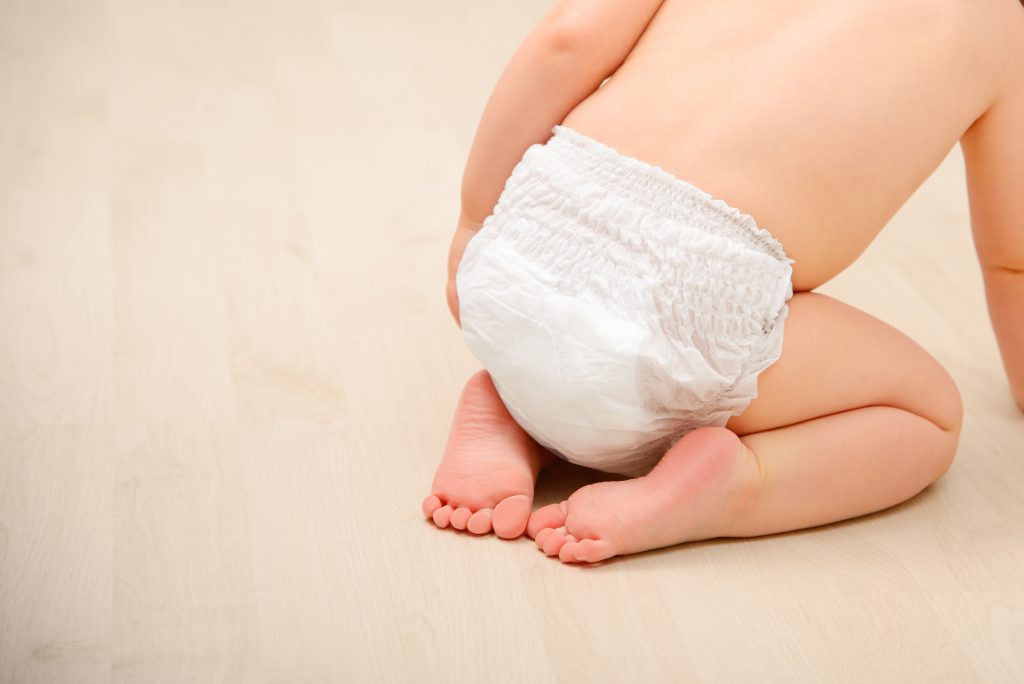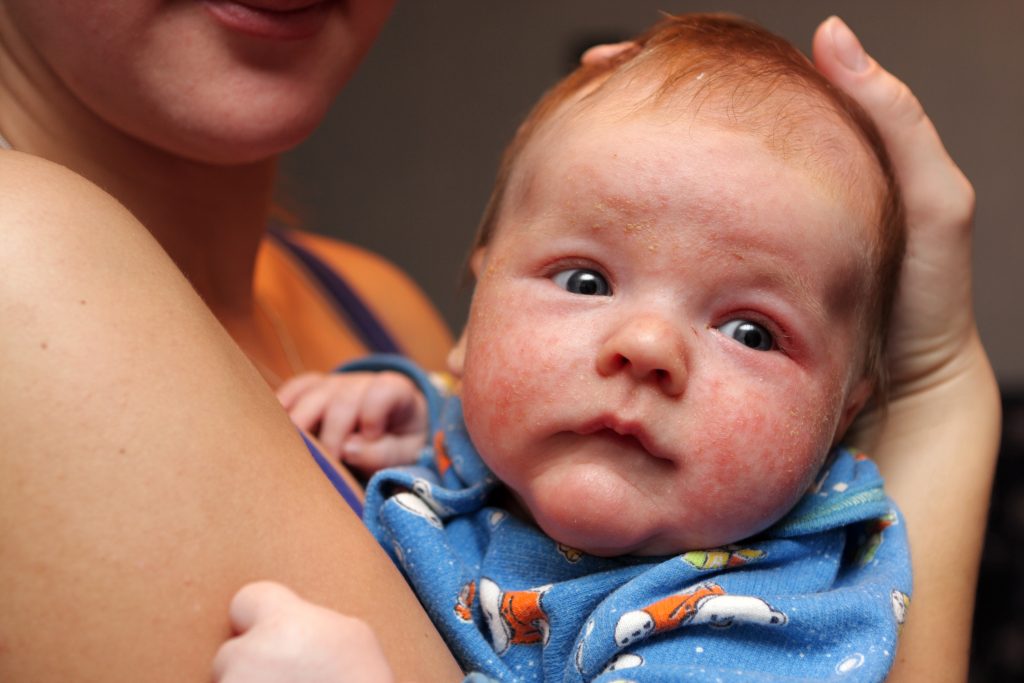What is Diaper Rash?
A diaper rash, commonly referred to as diaper dermatitis (by physicians) is one of the most common skin disorders in infants and toddlers. It is marked by a bright red rash in your child’s diaper area. If not treated, the rash may spread to the red or scaly areas on the scrotum and penis in boys or the red or scaly areas on the labia and vagina in girls. Without intervention, it can lead to blisters, ulcers, large bumps and further infection.


What Causes Diaper Rash?
The rash primarily develops as a result of irritation by urine, feces, moisture, and friction. Misuse or overuse of baby creams, lotions, oils, and powders can cause a diaper rash to develop as well. The use of cleansing agents such as soap, fecal enzymes, and diarrhea due to infection or antibiotic use all have the ability to change the skins integrity, making the skin more susceptible to developing a diaper rash.
Are There Different Types of Diaper Rash?
Yes, there are several different types of diaper rash. The most common type of diaper rash is irritative dermatitis which is simply a rash caused by irritation. Irritative dermatitis typically involves the skin region in which contact with the diaper is greatest. A diaper rash caused my irritation may be mild red, shiny, and with or without “papules” which are elevated lesions of various colors.
The second most common diaper rash is what is referred to as candidal dermatitis. Unlike irritative dermatitis that does not affect skin folds, candidal dermatitis is a rash that involves folds in the skin. The rash may present as bright red, raw skin containing flat discolored legions (macules) or elevated solid lesions varying in color (papules) with varying legions surrounding the area that may be inflamed.
The way a diaper rash is treated depends on the severity and cause of the rash. The first step in treating a diaper rash is eliminating the cause, for example, changing wet diapers quickly and frequently to avoid having the child sit in the moisture and bacteria stricken feces. If the rash is mild and noninfected, a mild cream containing zinc oxide can be used to alleviate the rash. There are many over the counter products and a full line of prescription products to treat a diaper rash but a medical professional should be consulted before using any product. Our doctors at Advanced Dermatology P.C. are experts with years of experience and will be happy to guide you in choosing the proper product for your child.A severe diaper rash will require aggressive treatment and a prescribed paste will usually be the topical treatment agent of choice. Pastes are thicker than creams and contain petrolatum, higher concentrations of zinc oxide, karaya powder in some, and moisturizers to assisting in the healing and prevention of future episodes.


What Happens If The Diaper Rash is Not Treated?
A diaper rash presenting more than 72 hours usually is a candida infection. This yeast infection produces a protease that penetrates the skin and can cause a primary or secondary infection such as seborrheic dermatitis that affects the face, skin folds, and scalp. In addition, an untreated diaper rash may become secondarily infected with bacterial microbes leading to further infection and discomfort.
Preventing Diaper Rash
The best way to prevent a diaper rash from developing or redeveloping is through good skin maintenance. Keeping your baby dry through frequent diaper changes will not only keep your baby comfortable and happy but is the ideal way to treat and prevent a diaper rash from developing. A wet or soiled diaper should be changed as soon as possible. If diaper dermatitis is present, the diaper should be changed at least every 2 hours during the day and at a minimum once, at night. There are many disposable diapers on the market. After experimenting with different brands, you may find certain companies produce a more absorbent diaper. Using such a brand may assist in the prevention of a rash. In the same vain, you may find different brands of “baby wipes” prevent or exacerbate symptoms.
Diaper creams or ointments may be applied especially at night to help with managing and preventing a future rash. There is a bounty of products available over the counter. Creams may be water in oil (greasy) or oil in water (nongreasy) emulsions. containing ingredients such as humectants, vitamins, antibacterial/antifungal components, antiflammatory ingredients and other properties to moisturize, ease discomfort. Schedule an appointment with one of our doctors to get advice on how to treat your child’s diaper rash.

Frequently Asked Questions
What cures diaper rash quickly?
The key to eliminating diaper rash quickly is to clean the skin and keep it dry. This skin lesion occurs due to excessive moisture, so you need to make sure the area is kept dry and clean. If the symptoms persist, the best course of action is to consult with a dermatologist that can provide an effective solution.
What causes a diaper rash?
Diaper rash can be caused by a variety of factors, including:
- Antibiotics
- Sensitive skin
- Changes in diet
- Yeast and bacterial infections
- Introduction of new skin products
- Chafing or rubbing
- Tight diapers
- Irritation from feces and urine
How long does a diaper rash last?
If treated correctly, a diaper rash should not last more than 3 days. However, if left, the symptoms of this skin lesion may persist for an undefined amount of time and may even get infected, causing further complications.
Does vaseline help diaper rash?
Is diaper rash painful for babies?
In most cases, diaper rash does not produce pain or itchiness in babies, as long as it is treated in a timely manner. Severe cases that are left unattended can result in discomfort, pain, and even skin infections that can produce additional issues.
